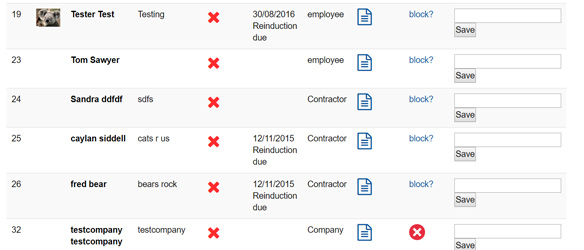Employee Offboarding Checklist: Top Ten Steps
Online Induction >> Employee Offboarding SystemPublished 15/09/2025
 Companies often pour resources into onboarding processes to ensure new hires feel welcomed and equipped. Yet, when it comes to offboarding—saying goodbye to employees who are leaving—the process can sometimes feel like an afterthought. This is where the importance of an offboarding checklist truly shines. It's not just about collecting office keys or disabling access; it's about ensuring a seamless transition that benefits both departing employees and the company they leave behind.
Companies often pour resources into onboarding processes to ensure new hires feel welcomed and equipped. Yet, when it comes to offboarding—saying goodbye to employees who are leaving—the process can sometimes feel like an afterthought. This is where the importance of an offboarding checklist truly shines. It's not just about collecting office keys or disabling access; it's about ensuring a seamless transition that benefits both departing employees and the company they leave behind.
An effective offboarding checklist plays a pivotal role in safeguarding sensitive information. When an employee exits without a structured process in place, there’s always a risk of overlooking critical tasks such as revoking access to company accounts or retrieving hardware. Without these steps, businesses may face potential security breaches or loss of intellectual property. By implementing a detailed checklist, companies ensure that all necessary actions are taken promptly and systematically, mitigating any risks associated with data security.
Designing an Offboarding Checklist
Beyond logistical concerns, the offboarding process provides a unique opportunity for feedback. Exit interviews, often included in comprehensive checklists, offer insights into organizational strengths and areas for improvement. Employees on their way out tend to be more candid about their experiences than those still invested in maintaining workplace harmony. Gathering this feedback can foster growth and development within the company by highlighting patterns or issues that might have otherwise gone unnoticed.Mandling departures with care reflects positively on your employer brand. In today’s hyper-connected world, word of mouth travels fast - especially online through platforms like Glassdoor or LinkedIn. A well-executed offboarding process leaves departing employees feeling respected and valued rather than discarded once they've handed over their badge. This positive experience can transform former employees into powerful advocates for your company long after they’ve left.
A thorough offboarding also helps maintain morale among remaining team members. Watching colleagues depart can be unsettling if it feels abrupt or poorly managed. However, when coworkers see that departures are handled professionally and empathetically through an organized checklist system, it signals to them that they too will be treated with respect when their time comes—fostering trust and loyalty within the organization.
Let’s not overlook how strategic offboarding can pave the way for smoother re-engagement down the line. Whether it’s boomerang employees returning after gaining external experience or alumni recommending your company to top talent in their network—departures managed well create lasting positive connections that could benefit your organization in unforeseen ways later on. So next time you think about transitions at work, remember: discussing the importance of an offboarding checklist isn’t just HR speak—it’s smart business strategy.
We've found that the below check list are the most common employee offboarding check list items that organisations establish for their employee exit process
Offboarding Checklist
 1: Transfer of knowledge between staff
1: Transfer of knowledge between staff
 2: IP issues
2: IP issues
 3: Removing access to systems
3: Removing access to systems
 4: The hand over of emails and preventing deletion of emails
4: The hand over of emails and preventing deletion of emails
 5: Managing the exit of internal documents access
5: Managing the exit of internal documents access
 6: Exit Surveys
6: Exit Surveys
 7: Remote computer access
7: Remote computer access
 8: Returning equipment that belongs to the business
8: Returning equipment that belongs to the business
 9: Returning swipe cards
9: Returning swipe cards
 9: Destroying company information held privately such as contact lists
9: Destroying company information held privately such as contact lists
 10: Employee farewells to set a good culture for the rest of your team that they too will be celebrated for their work one day
10: Employee farewells to set a good culture for the rest of your team that they too will be celebrated for their work one day














